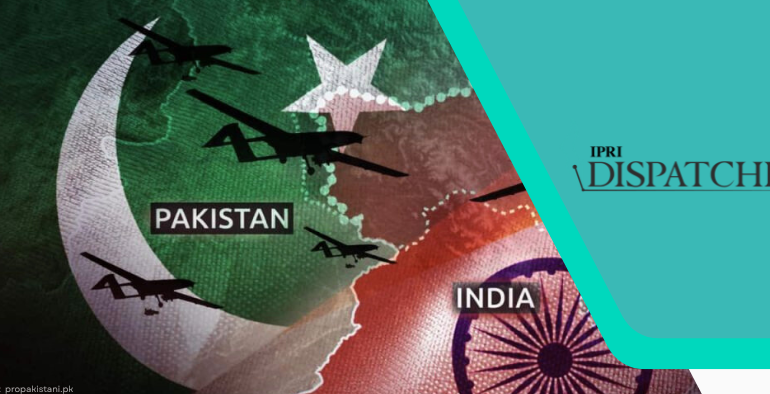Dispatches Uncategorized 13/10/2025
‘’No pedagogy which is truly liberating can remain distant from the oppressed by treating them as unfortunates and by presenting for their emulation models from among the oppressors. The oppressed must be their own example in the struggle for their redemption.’’ (Paulo Freire, 1972)
Education in emergencies (EiE) is an undisputed human right, enshrined within International Human Rights Law (IHRL), International Humanitarian Law (IHL) and International Refugee Law (IRL). As straightforward as this may sound, the complexities in delivering education amidst a crisis are far from simple. Currently, Pakistan’s eastern Punjab province is grappling with a devastating flood, which is said to be the biggest in its flood history.
Disasters come at a heavy price, not only in terms of lives and livelihoods lost, but in the turmoil and destruction they bring to communities. As a consequence, displacement and severe economic damage are but the tip of the iceberg for recovering countries and their people.
Following the more recent monsoon floods of 2022, an estimate of US$30 billion in flood damage and economic loss was reported. Amidst these circumstances, the role education plays in emergencies can pale in insignificance and with little to no resources following a disaster, this stand-alone essential humanitarian response is one of the least developed.
The lingering legacy of formal mainstream education, rooted in a colonial past, has restricted the pedagogical development unique to each state and region. Education as a social phenomenon draws on the complexities of culture, economics, geography and politics, to name a few. As argued by Kenneth Bush, education is a double-edged tool – it can either foster human flourishing or serve as a mechanism of oppression.
The issue at hand is that despite the protective characteristics of EiE, there continues to be a top-down approach in relation to how education is delivered. The ability for affected communities to make meaningful contributions to the curricula and draw on their traditional knowledge is undervalued by mainstream education and capitalist needs. The tension that arises from this is that education in whatever setting becomes disconnected from the context and needs of the learners.
The increase in uncertainty for countries like Pakistan, and many more within the Global South, has meant that the affected communities are in states of prolonged emergencies – making education perpetually operate within these settings. This transition has not quite entered policymaking.
The need to innovate and draw on informal and non-formal education as methods that can support mainstream schooling, together with digitalisation, can provide a lifeline for many children and youth who have little to no access to schooling. Beyond schools and jobs is the human development aspect that education can support. Currently, an estimated 22.8 million children aged 5-16 are out of school in Pakistan. Figures from UNICEF rank Pakistan as the world’s second-highest country with the most out-of-school children (OOSC).
The psychological impact caused by disasters can be addressed by an EiE rooted ‘by, for and with’ the affected community. The idea to parachute in, from external actors and provide a one-size-fits-all solution in terms of curricula, is problematic. A firm distinction needs to be made when relying on International Law to uphold rights like education. It is therefore argued that the ‘for all’ in reality is skewed.
Education is highly commoditised – with those that can afford private education benefiting, and, as much as this can bring about solace, the climate crisis is a global and national issue. The individualistic mindset and fierce competition that come with the global economic system can only take us so far.
In light of current humanitarian aid cuts and suspension of USAID, together with the underfunding of the United Nations (UN), humanitarian responses, including those of the EiE sector, have been severely hit.
According to recent data, the aid cuts of 2025 have come at a time when an existing trend of downward funding for EiE is taking place. Arguably, this spells a crisis for the protection of education within emergency settings. The scale back can also be a sign of donor fatigue. Ultimately, the humanitarian sector at large is facing a global disintegration. The realities on the ground look and feel very different.
The school building in much of rural Pakistan tells a story of chronic marginalisation. Dilapidated buildings, with few and infrequent visits from teachers, empty school chairs, are an education system that serves an elite minority. Drawing from a recent report on the psychosocial impact affecting children following the 2022 Floods, education was highlighted as a core process for the rehabilitation and wellbeing of the community. Ultimately, the dependability of top-down systems that exclude the local community when unable to deliver services creates a vacuum in which resources and capacity for local actors to take over are unavailable.
From this stems the arrogance of mainstream humanitarianism, including the EiE sector, which is in itself limited and reliant upon a system that answers to donors and contradictory political agendas. The dignity of learning, together with the development of education in all contexts, needs to be re-centred within the community and supported by the national government as an imperative. Education is more than a lifeline – it is a right for personal development and realisation of our potential.
Disclaimer: The views expressed in the article are of the author and do not necessarily represent the institute’s policy.
Authored by: Dr. Claudia Milena Adler is Deputy Programme Leader and Lecturer in International Humanitarian Affairs at the University of York, United Kingdom.
Read More: Analysis of Pakistan Policy Guidelines for Carbon Markets – 2024

